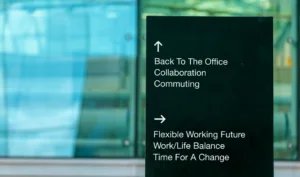
Workplace Trends: Should They Come With Expiration Dates?
We publish a lot of articles at TalentCulture by terrific HR practitioners, innovators, and thought leaders. In fact, we’ve been sharing useful ideas from diverse

We publish a lot of articles at TalentCulture by terrific HR practitioners, innovators, and thought leaders. In fact, we’ve been sharing useful ideas from diverse

If you subscribe to our twice-monthly TalentCulture newsletter, or you follow us on social media, you probably know we often publish original articles by business

Are you an extrovert? About half of the people in the U.S. are. But what exactly does that mean? The Myers-Briggs Type Indicator (MBTI) personality

In recent years, digital transformation has been one of the hottest topics in leadership circles. Technology is central to this kind of complex, large-scale endeavor.

No question about it. Strong internal communication is critical to a strong business. But it’s not easy — especially when workplace dynamics are constantly fluctuating.

When the pandemic arrived in 2020, everyone’s definition of work changed in a heartbeat. Most people headed home, leaving their offices, cubicles, water coolers, and

For most office-based employees, “work” no longer represents a physical location. In fact, 84% of people who worked remotely during the pandemic said they intended

At what point in a career does learning stop? Hopefully, never! Most business and technical professionals realize that becoming proficient in a job and becoming

Sponsored by Social Flowers What a difference three years can make! I’m sure that’s what many remote employees are thinking these days. Before the pandemic,

The pandemic changed how we live and work in so many ways — not the least of which was the daily commute. But now, after

Work Norms Are Changing In 2019, about nine million U.S. civilians worked from home on a regular basis. Then the pandemic arrived. Nearly overnight, remote

We don’t need research to tell us the future of work will be much different from pre-pandemic norms. But Covid isn’t the cause. Disruption was

Predicting the unexpected is a tricky process — especially in the world of digital innovation, where change and disruption are a way of life. But

When the pandemic suddenly forced millions of people to work remotely, employers weren’t sure what to do next. Because the transition was nearly instantaneous, this

Have you noticed that workforce engagement and motivation are slipping? You’re not the only one. In April, Gallup confirmed that U.S. workforce engagement declined from

It’s not a stretch to say COVID changed everything—including the way working families think about childcare benefits. Before the pandemic, parents struggled with childcare challenges,

Sponsored by: SAP Concur The next chapter of the future of work – hybrid work—is underway as businesses return to the physical office in some

Think like a scientist: Do a test. Record your next video meeting of three or more people. Afterward, transcribe the recording. Then, with a printed

A survey from Pew Research Center found that the vast majority of remote staffers think working from home is somewhat or very easy. In that study,

Now more than ever, organizations are interested in ways to re-design employee experience. But what’s the best way to accomplish this? How can HR technology

Women hold more than half of American jobs. Yet, they make up just 27 percent of executive and senior-level management in S&P 500 companies. Meanwhile,

The worst of the COVID-19 pandemic is finally starting to come to an end. Because of this, many companies are re-opening their brick-and-mortar offices. Employees

The workplace is becoming more diverse as organizations offer remote and hybrid work options and build a global workforce. With these big changes comes a

Toxic leadership is the main reason why employees leave their jobs. In order to become truly exceptional, those in charge must practice empathetic leadership. Empathy

The future of work is hybrid–with over 50 percent of people saying they’d prefer to work from home at least three days per week. But